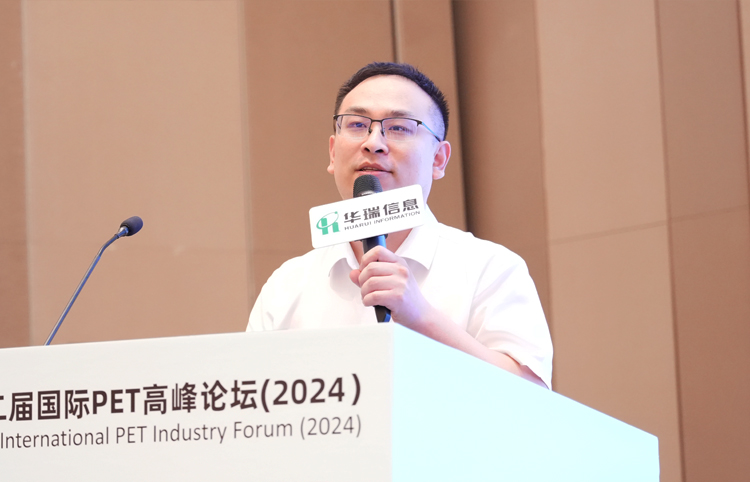PET bottle chip: market competition and restructuring amid capacity expansion
——Charles Guo, Lead Analyst of CCFGroup
Charles Guo, Lead Analyst of CCFGroup, delivered his report of PET bottle chip: market competition and restructuring amid capacity expansion

Part One: The shifting dynamics between overseas markets and China
Mr. Guo provided a comprehensive analysis of the polyester products, capacity distribution, investment trends, exports, trade barriers, and changes in trade flows. He highlighted that China's share in the global PET bottle chip market has been steadily increasing, while overseas investments have relatively slowed down. China's PET bottle chip export network now spans over 130 countries and regions, but it also faces trade barriers from multiple countries. This reflects China's growing influence in the global PET bottle chip market and the complex challenges it faces in the international trade environment.
Part Two: Why Did China's PET bottle chip capacity increase by 10 million tons in 2 years?
Mr. Guo explained the reasons behind the 10 million-ton capacity growth of China's polyester bottle-grade resin in just two years, examining the driving forces behind capacity expansion and the phenomenon of concentrated capacity deployment.
Part Three: What is the essence of the intensified industry competition?
Mr. Guo delved into the redistribution of market share, the growth of demand and supply, the increase in downstream demand, and the supporting conditions for both upstream and downstream sectors. He argued that the core of industry competition and upgrading lies in the redistribution of market share, accompanied by growing demand and increased supply. With the continuous growth of domestic demand and exports in 2024, excess supply may become a reality, requiring new growth points in the downstream market to absorb the surplus capacity. This also mirrors the intensification of competition within the industry.
Part Four: Market outlook
Mr. Guo forecasted that the future trends in the PET bottle chip market will be influenced by cost expectations, seasonal demand fluctuations, and the sustainability of exports. In the short term, market attention will focus on the release of new capacity and adjustments to processing fees. In the medium term, attention should be paid to restocking strategies and contract negotiations for the new year. In the long term, the end of the capacity expansion cycle and new growth points in downstream demand will be critical. Furthermore, the introduction of PET bottle chip futures could reshape the operational models of the industry, a development that warrants close attention from industry participants.